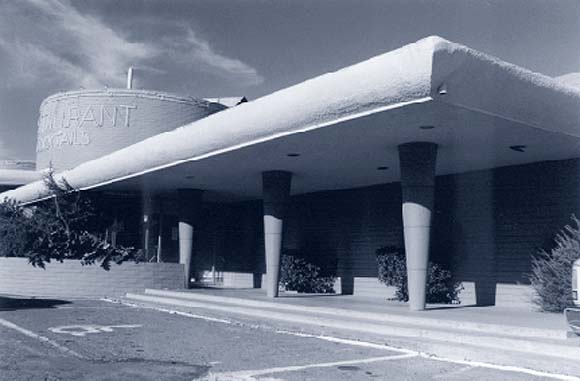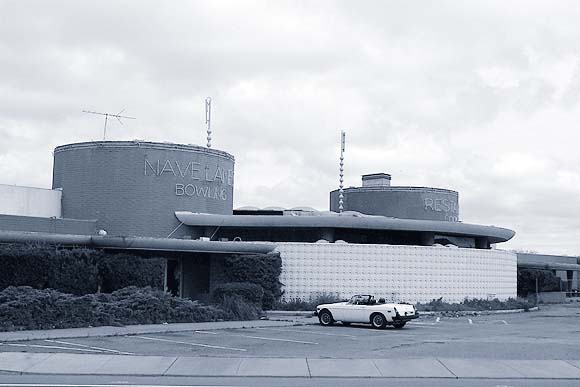William J. Nave, a community leader and prominent businessman in Marin County, commissioned the Nave Lanes bowling alley in Novato in the late 1950s. The building was designed circa 1959 by architect Gordon Phillips, whose objective was to make reference to the style of his mentor, the late Frank Lloyd Wright, with whom he spent a brief period of time as an apprentice and whose now world-famous Marin County Civic Center was under construction less than 10 miles south of the bowling lanes.
By making overt reference to the Marin Civic Center’s distinctive shapes and decorative motifs, Phillips was attempting to bring the language of this new architecture to Novato, a town that, prior to the bowling alley, had no modern architecture of note. In addition to this important association, the building has significance on its own: its clear, organic plan, its strongly composed volumes, and the very fact that it is a high style design applied to a commercial enterprise such as a bowling alley confer upon it special status.
The building’s massing is a clear set of geometric volumes. Along Nave Drive and facing Highway 101, the western entry elevation is essentially a long bar with a series of circular forms defining the public spaces. The skylit circular atrium is at the center, with taller brick cylinders to either side. Entry is through an arcade with tapered columns reminiscent of Wright’s Johnson Wax Company headquarters.
On September 12, 1999, Nave Lanes closed its doors to business. The Nave family sold the building and property to Albertsons, the new owner of Lucky Supermarkets. The building, according to Michael D. LaTourette, a representative of Albertsons, was to be demolished to make way for a parking lot for a brand new Albertsons supermarket. Efforts to convince Albertsons to preserve the building have so far been unsuccessful. The status of the fate of the building is presently unknown.
Photos by the author.
Author and architect Anthony Catsimatides, AIA, practices in Marin County. In 1995, he founded Plan Net Professional Online Service, an Internet based design service that has evolved into a web-zine of resources, ideas, and articles about architecture and planning.
Originally published 2nd quarter 2003, in arcCA 03.2, “Global Practice.”







